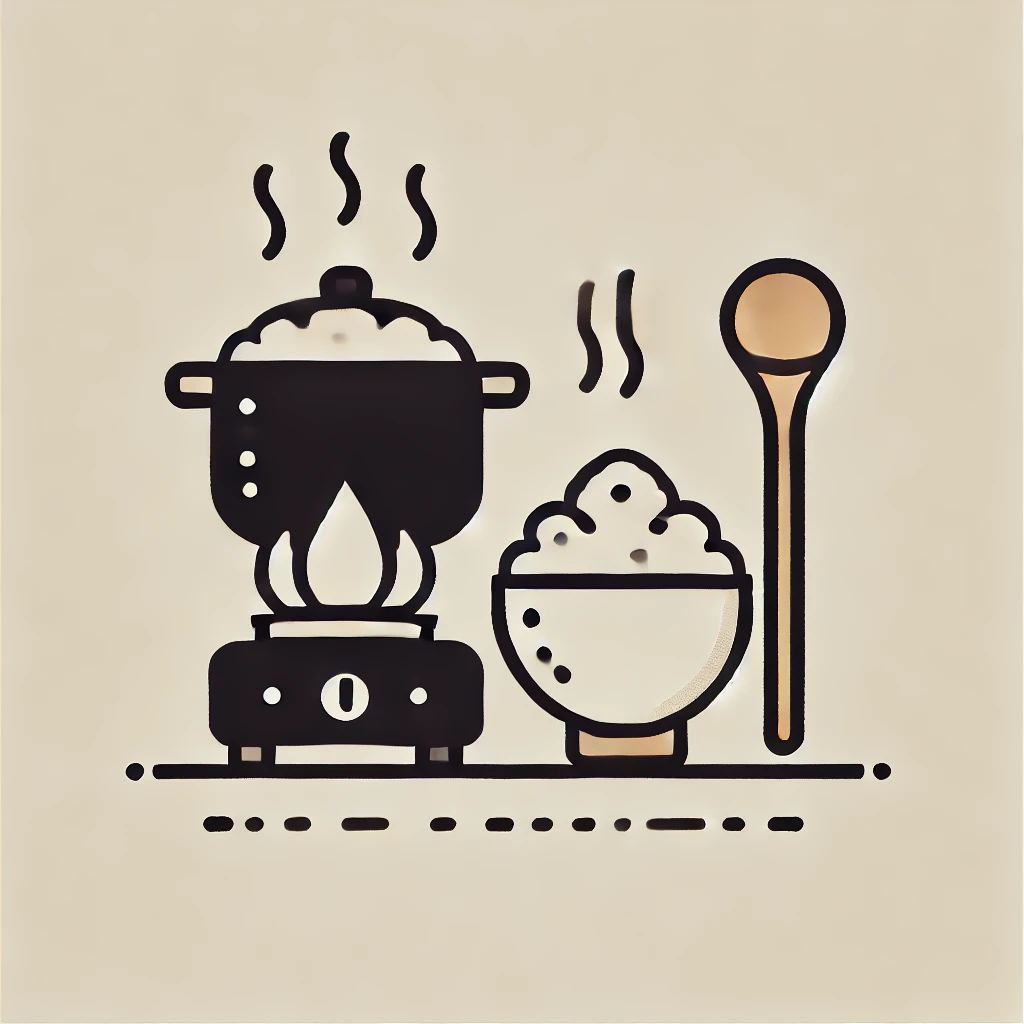Learn Korean, One Bite at a Time
Bap in Everyday Korean Conversations
Koreans use the word 밥 (bap) in daily speech in ways that go beyond food. Here’s a common dialogue:
👩: 밥 먹었어요? (Bap meogeosseoyo?) – “Did you eat?”
👨: 네, 먹었어요. (Ne, meogeosseoyo.) – “Yes, I ate.”
👩: 뭐 먹었어요? (Mwo meogeosseoyo?) – “What did you eat?”
👨: 김치찌개랑 밥 먹었어요. (Kimchi-jjigaerang bap meogeosseoyo.) – “I ate kimchi stew and rice.”
In Korean culture, asking “밥 먹었어요?” isn’t just about food—it’s another way of saying “How are you?” or showing care for someone.
Cultural Insights: 밥 = Life
In Korea, rice is more than a meal—it’s a symbol of life and well-being. Even the word “to make a living” is tied to bap:
🔹 밥벌이 (bap-beori) – “Earning a living”
🔹 입에 풀칠하다 (ibe pulchilhada) – “Barely making ends meet” (literally, “just putting paste on the lips”)
Koreans also use 밥 (bap) in expressions that reflect life situations:
✅ 찬밥 신세 (Chanbap sinse) – “Being treated like cold rice” (Being neglected or ignored)
✅ 밥은 먹고 사니? (Bapeun meokgo sani?) – “Are you at least eating?” (Checking if someone is doing okay)
✅ 밥만 축낸다 (Bapman chuknaenda) – “Just wasting rice” (Referring to someone who isn’t contributing)
✅ 밥심으로 산다 (Bapsimeuro sanda) – “Living on rice power” (Rice gives us strength!)
These idioms show how deeply bap is woven into Korean daily life.
How to Cook Bap (With a Fun Korean Twist!)
Want to cook perfect Korean rice? Follow this simple guide:
1️⃣ 씻다 (ssitda) – Wash the rice
- Rinse the rice 2-3 times until the water runs clear.
2️⃣ 붓다 (butda) – Pour water
- Add water using the 손가락 측정법 (finger measurement method).
3️⃣ 끓이다 (kkeurida) – Boil it
- Bring it to a boil, then simmer on low heat with the lid closed.
4️⃣ 뜸 들이다 (tteum deurida) – Let it rest
- Turn off the heat and let it sit for 10 minutes.
5️⃣ 맛있게 먹다 (masitge meokda) – Enjoy your bap!
💡 Tip: The golden crispy rice at the bottom, 누룽지 (nurungji), is a Korean favorite! Pour hot water over it to make a delicious, soothing drink.

쌀밥의 시
흰 쌀밥 한그릇 속에,
배고픈 날 밤,
쌀처럼 반짝이던 별,
쌀가루 같았던 하얀 눈송이 들어 있다.Rice in Poetry
Inside a bowl of white rice,
On a hungry night,
Stars once twinkled like grains of rice,
And white snowflakes, like rice flour, rest within.*A bowl of silky steaming rice was a symbol of richness in Korea long ago. Having white rice meant abundance, and sharing it meant warmth and hospitality.
Next on the Table: 국 (Soup)
Now that we’ve talked about rice, what always comes next? 국 (guk, soup)! Stay tuned for our next post, where we’ll explore Korean soups that complete every meal.